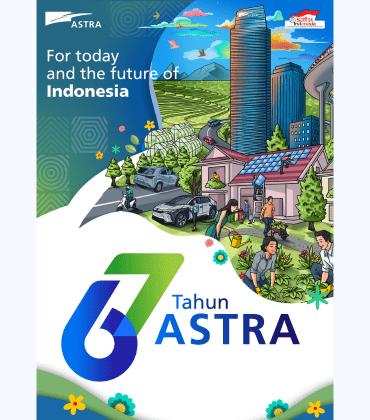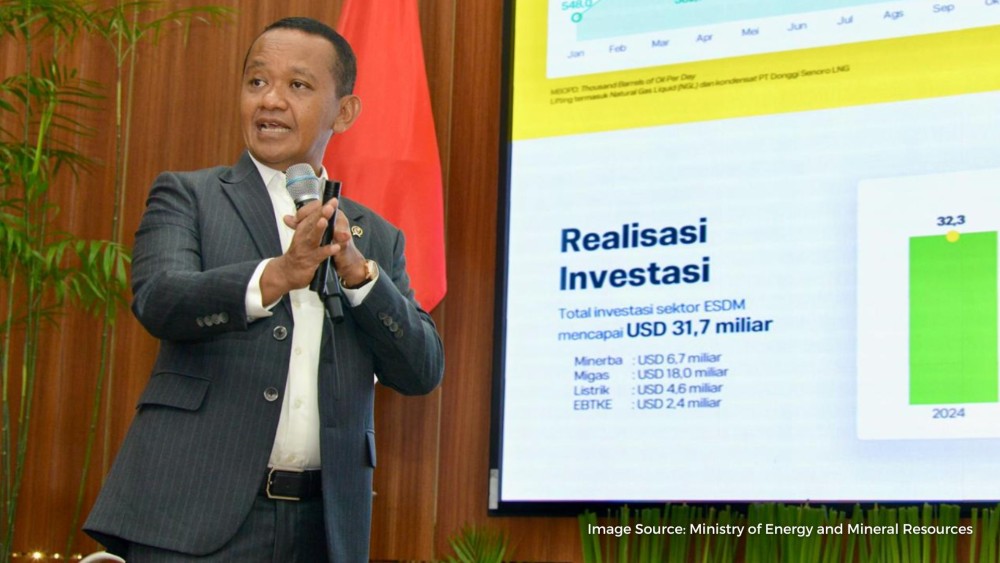This Week’s Headlines (Oct. 13 - 18, 2024)
18 Oct 2024

Bappenas draws up two scenarios to attain Prabowo’s 8% growth target
Bappenas has drawn up two possible scenarios for the country to achieve incoming president Prabowo's plan to reach GDP growth of 8 percent, an entire percentage point higher than Jokowi's unattained target of 7 percent.
The National Development Planning Agency (Bappenas) has drawn up two scenarios to achieve president-elect Prabowo Subianto’s plan to bump up the GDP growth rate to 8 percent.
The scenarios, which are included in the 2025-2029 National Medium-Term Development Plan (RPJMN), foresee increasing GDP growth to an average rate of 6 to 7 percent during the Prabowo administration toward ultimately hitting 8 percent annual GDP growth.
“For us, what’s important is how to find the sources of economic growth to accelerate it to 8 percent,” Bappenas economy undersecretary Amalia Adininggar Widyasanti said, as quoted by Bisnis.com on Wednesday.
One scenario envisions attaining a growth rate of 5.7 percent in Prabowo’s first year in office, followed by 6.4 percent, 7 percent, 7.5 percent and then 8 percent in each subsequent year. This brings the average to 6.9 percent throughout the five years of the incoming Prabowo administration.
The other scenario aims to achieve 8.3 percent growth in Prabowo’s third year by aggressively jacking up the rate to 6.8 percent during the first year and then 7.6 percent in the second. These are to be followed by 8.0 percent and 7.8 percent in his fourth and fifth years, respectively, for average GDP growth of 7.7 percent.
An earlier document created by Prabowo’s campaign team stated that an annual GDP growth average of 6-7 percent was necessary to achieve the Golden Indonesia 2045 vision for the country to become a developed country by its independence centenary.
Presumably, the RPJMN 2025-2029 contains details on how to reach such ambitious growth rates, but the final draft of the document has not been made available to the public.
Bappenas’ Amalia said industrialization could help achieve 8 percent growth but due to fiscal limitations, the state would have to prioritize certain sectors as set out in the agency’s 2025-2045 National Long-Term Development Plan (RPJPN).
The initial RPJMN draft notes its main priority as “downstreaming” key natural resources, the service sector, labor-intensive industries that require skilled workers, essential industries and innovation-intensive industries.
For downstream industries, Bappenas’ 20-year plan eyes further development in the palm oil, coconut, nickel, copper, bauxite, tin and seaweed processing sectors.
To increase skilled labor industrial activities, the ministry is banking primarily on the food and beverage, footwear and textile industries, while essential industries comprises chemicals and basic metals.
Meanwhile, innovation-intensive industries include cosmetics, pharmaceuticals, semiconductors, machinery and parts, aerospace and electric vehicles.
Amalia said industrialization was not the sole driver of GDP growth, noting that the incoming administration would also roll out various national programs to stimulate economic activity.
“For example, by building infrastructure. And then there’s the free [nutritious] meal program, which relies on a supply of local [produce]. This can help invigorate economic growth,” she said.
Indonesia’s GDP growth in the past 10 years has hovered at 5 percent, although President Joko “Jokowi” Widodo aimed to push it up to an ambitious 7 percent.
Historic high growth was recorded during Soeharto’s authoritarian New Order regime, until the Asian financial crisis and widespread domestic protests in 1998 forced Soeharto to resign and ushered in the reform movement, during which the country embarked on radical, structural changes.
In the post-reform era, the country recorded its highest full-year GDP growth in 2010 at 6.38 percent, and has never gotten close to such a level since.
Source: The Jakarta Post
IBC-CATL Forms Battery Cell JV to Strengthen Indonesia’s Global Position
PT Industri Baterai Indonesia (Industry Battery Corporation/IBC) has partnered with CBL International Development, a business unit of CATL, to establish a joint venture (JV) aimed at reinforcing Indonesia’s position as a key player in the global battery industry.
“This initiative aims to strengthen Indonesia’s position as a key battery player in the global market,” said IBC President Director Toto Nugroho in a statement in Jakarta on Thursday.
IBC, or Industry Battery Corporation, has entered into a partnership with CBL International Development Pte Ltd, a business unit of Contemporary Amperex Technology Co. Limited (CATL), to establish a joint venture for battery cell manufacturing.
IBC, as an investment holding company in the field of new energy materials, signed an interim agreement and the joint venture (JV) establishment deed with CBL International Development Pte Ltd, the business unit of CATL, a world leader in electric vehicle (EV) batteries.
The agreement signing took place at the Office of the Ministry of State-Owned Enterprises of the Republic of Indonesia on Wednesday, October 16, witnessed by Deputy Minister of State-Owned Enterprises, Kartika Wirjoatmodjo.
Toto stated that the collaboration is a strategic effort by IBC to promote nickel downstreaming and the development of an integrated battery industry, while also establishing an electric vehicle battery supply chain from upstream to downstream.
In this partnership, IBC—a joint venture of PT Antam Tbk, PT Indonesia Asahan Aluminium, PT Pertamina (Persero), and PT PLN (Persero)—is involved in the downstream segment of the value chain, which includes battery material manufacturing, battery cell manufacturing, and battery recycling.
“Today, we report that our JV 5, the battery cell manufacturing project, has entered its initial phase and is located in Karawang, West Java,” Toto said.
Through joint efforts, IBC and CBL aim to develop this project gradually with a total investment of US$1.18 billion and achieve a total production capacity of 15 GWh per year.
“This capacity is sufficient to meet both domestic and global demand,” Toto added.
General Manager of International Business Manufacturing Operations at CATL, Gordon An, stated that the battery factory project is a key component in building the electric vehicle and electric battery industry chain and ecosystem in Indonesia.
“CATL is willing to actively leverage its strengths in technology innovation and manufacturing, and looks forward to working with our partners in Indonesia to support electrification efforts in the country,” said Gordon.
Deputy Minister of State-Owned Enterprises, Kartika Wirjoatmodjo, mentioned that IBC could become a major player capable of attracting investors and partners to the battery industry, positioning itself ahead of other global players in the sector.
“We must also be quick, agile, and adaptive in executing this project. We need to monitor technological changes in the electric vehicle sector so that we can become more competitive,” Kartika said.
He expressed hope that through this partnership, Indonesia will be able to produce battery cells by 2027.
Considering Indonesia's nickel reserve potential, Kartika added, Project Dragon is expected to strengthen Indonesia’s position in the global electric vehicle battery supply chain.
Additionally, the project is expected to generate significant economic benefits for Indonesia, such as job creation, attracting foreign investment, and increasing the country's renewable energy capacity.
This project will undoubtedly support Indonesia’s commitment to achieving its net zero emissions target by 2060.
“Through multi-stakeholder collaboration, including the government, state-owned enterprises, and international partners, Indonesia is moving towards a future of sustainable energy independence,” said Kartika.
Source: Antaranews
Indonesia Maintains 53-Month Trade Surplus Streak Despite Export Decline
The Central Statistics Agency (BPS) reported a trade surplus of $3.26 billion (Rp 50.79 trillion) for September 2024. This surplus increased by US$480 million compared to August 2024 but contracted by $150 million compared to September 2023.
Exports reached $22.08 billion in September 2024, marking a 5.8 percent decline from August 2024, while showing a year-on-year growth of 6.44 percent. Meanwhile, Indonesia's imports for September 2024 totaled $18.82 billion, down 8.91 percent from the previous month, but up 8.55 percent compared to September 2023.
Economists had anticipated a decline in export figures due to falling coal prices and a slowdown in global manufacturing activity. This trend is reflected in the Purchasing Managers' Index (PMI) for Indonesia's key trading partners, including the US, China, and Europe, all of which continue to show signs of contraction.
"The trade surplus for September 2024 is higher than the previous month but lower than in the same month last year. Thus, Indonesia has recorded a surplus for 53 consecutive months since May 2020," said Acting Head of BPS Amalia Adininggar Widyasanti during a press conference at the BPS office on Tuesday.
She said that the September 2024 surplus was bolstered by a non-oil and gas surplus of $4.62 billion, with key contributors including mineral fuels, fats and oils, and iron and steel.
"However, for oil and gas commodities, Indonesia recorded a deficit of $1.36 billion, which was attributed to both refined and crude oil," Amalia added.
When examining trade partners, the three countries contributing most to the surplus in September 2024 were the United States ($1.38 billion), India ($942.1 million), and the Philippines ($783.9 million). Conversely, the countries with the largest deficits were China ($630.7 million), Australia ($369.4 million), and Singapore ($317.9 million).
Cumulatively, the trade balance from January to September 2024 shows a surplus of $21.98 billion, down $5.75 billion from the same period in 2023. Breaking it down, the non-oil and gas trade surplus stood at $37.03 billion, which is $4.67 billion lower than the previous year. At the same time, the oil and gas trade deficit amounted to $15.05 billion, an increase of $1.07 billion compared to the same period last year.
Source: The Jakarta Globe






